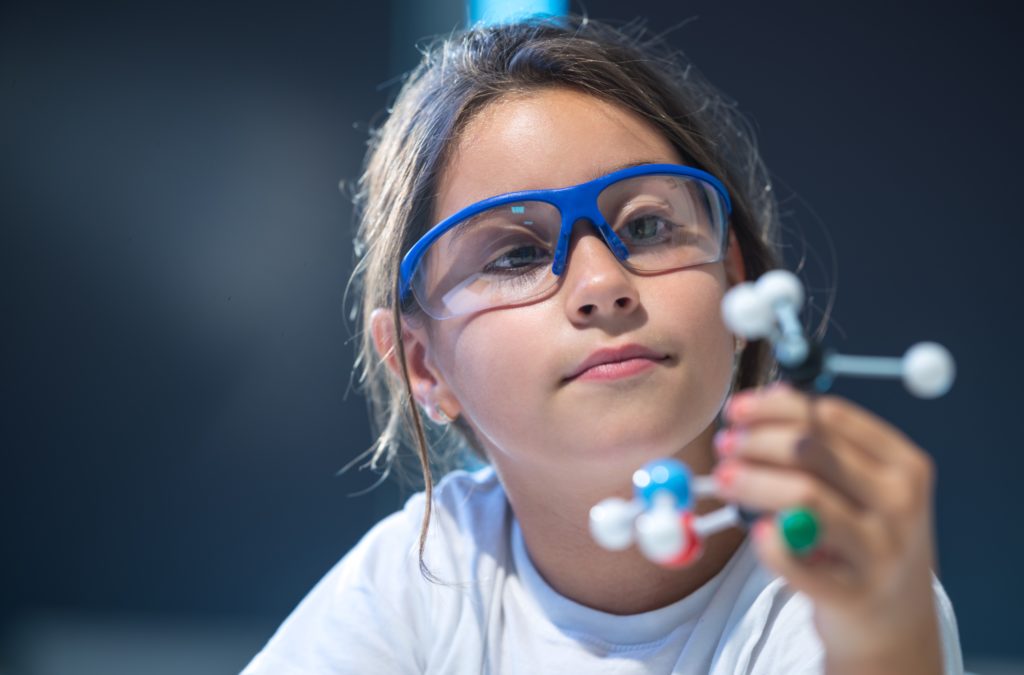
If you are thinking about enrolling your child in a private school, you may be overwhelmed by all of the options — not only the sheer number of schools to choose from, but also several different learning models and educational philosophies across the country that these schools employ.
Three of the most popular are Waldorf, Reggio Emilia and Montessori.
Though distinct, these types of schools, all founded in the early 20th century, are similar in that they offer creative, individualized and child-driven approaches to education.
Yet their philosophies have notable differences in terms of how the classrooms are structured and what the
curricula prioritize.
It’s important that you find the right fit for your child, but according to the experts and teachers we spoke with, one thing is true for Waldorf, Reggio Emilia and Montessori models: Any type of student has the potential to thrive in them.
Waldorf
‘Head, heart and hands’
Founded by scientist and thinker Rudolf Steiner, Waldorf education “is principally threefold, engaging head, heart and hands,” says Scotti Morrow, outreach and marketing director of The Waldorf School of Baltimore. “These three human capacities for learning—thinking, feeling and doing—carry equal weight and should work together harmoniously.”
Multisensory learning experiences
Waldorf teachers foster not only their students’ cognitive development, but also their physical and social-emotional development as well.
The thinking, feeling and doing approach, Morrow says, is the basis for which teachers at The Waldorf School of Baltimore support and engage children. Educators accomplish this objective “through multisensory learning experiences, such as art, time in nature, movement and music.”
Students in Waldorf schools learn from hands-on experiences rather than from textbooks. In fact, Waldorf students often create their own textbooks.
“By activating multiple regions of the brain, students create stronger mental pathways, deepen their connection to the material and lay an academic foundation that serves them for life,” Morrow says.
Creative thinking
Promoting original, creative thinking is a primary tenent of Waldorf education. Through exposure to multisensory, multieducational experiences, Waldorf educators aim to encourage kids to become creative free thinkers, a feature that can help children when it comes to mathematics and problem solving.
Thinking outside the box, coming up with creative solutions to challenges and testing hypotheses through discovery and experimentation are further skills introduced and developed in Waldorf educational settings.
Waldorf education is one of the fastest growing educational movements worldwide, Morrow adds.
Reggio Emilia
Curiosity
Founded in Reggio Emilia, Italy, following World War II, Reggio Emilia schools center on the innate curiosity of children.
“Children are naturally inquisitive and curious,” says Alice Wetzel, the early years coordinator at the Reggio-inspired Roland Park Country School in Baltimore, Maryland. “Our classrooms take that natural curiosity and work alongside it rather than being teacher-directed.”
Reggio teachers intently observe their classes to see what they are collectively drawn to learning about, then plan their curriculum around the students’ interests.
“I had a class that was really interested in the Chinese New Year, so they ended up putting on a dragon parade,” Wetzel says.
For their parade, Wetzel’s students recorded music, created invitations and made a huge dragon.
“We fold in our writing work and our music work and all of the different areas into something that they already show that they’re interested in,” she says.
Co-teaching
Reggio classes have a high teacher-to-student ratio.
“We have 15 children and two teachers,” Wetzel says of the classes at her school. “The teaching is a little different from a traditional preschool, in that it is co-teaching — a collaboration between the teachers and a collaboration between the teachers and the students.”
‘Loose parts’
Reggio Emilia schools use materials that adhere to the “loose parts theory,” which sees toys and manipulatives as open-ended.
“A block might start out as a block, but maybe a child is using it as a cell phone or something else,” Wetzel explains. One of the tenets of Reggio education is that “the environment is the third teacher.”
Reggio teachers put materials out in their classrooms to see what the students are drawn to as a way to foster their curiosity and allow the children to lead the lessons.
“With younger children, we might see that they’re interested in enclosing things or pouring things or hiding things,” Wetzel says. “Then we build on that interest.”
Montessori
Individuality
Named after its founder Maria Montessori, an Italian educator, physician and scientist, Montessori education is focused on the individual as being the source for learning and discovery.
“Much of our work is based on observing children and their unique nature and creating learning environments that support that unique nature,” says Gina Lofquist, senior director of education and strategic initiatives at the American Montessori Society.
Montessori teachers extensively observe children as individuals to understand how they work, both independently and as part of a group.
“While the focus is on the individual, it’s also looking at how someone is in community and how they can support a community of friends and learning,” Lofquist says.
Larger class sizes
One way Montessori schools support independence is through having relatively larger classes.
“If there are a lot of adults in the environment, then children might have a tendency to become more dependent on the adults,” Lofquist says. “It’s about this group of children coming together and supporting each other in their learning.”
‘Hundreds of teachers’
Unlike the open-ended learning materials in Reggio Emilia classrooms, Montessori schools have didactic, specially designed materials to promote learning in a variety of specific curricular areas.
“There are hundreds of teachers in a Montessori environment,” Lofquist says. “Between the children teaching each other and the materials teaching children, there are lots of learning opportunities.”
Preparing for adulthood
Montessori education aims to prepare students and build skills for later in life.
“What a child is really doing is constructing themselves to be an adult,” Lofquist says. “We try to create an environment that allows for a healthy construction of the adult who is to be.”
According to Lofquist, the lifelong skills that Montessori education instills include being “able to hear different perspectives, create with other people and vocalize ideas.”
With their creative, student-centered philosophies, any child has the potential to thrive in Waldorf, Reggio Emilia and Montessori schools.
As you can see, each model is unique, and if you’re already having a difficult time narrowing down the vast array of choices to send your child to private school, it might be helpful to take a deep dive into them all and see which you like best. Once you figure that out, see which private schools employ your preferred educational model. Voilà, it’s not all that daunting anymore, is it?
Learn about more private school educational options for your child on our website at www.baltimoreschild.com.









